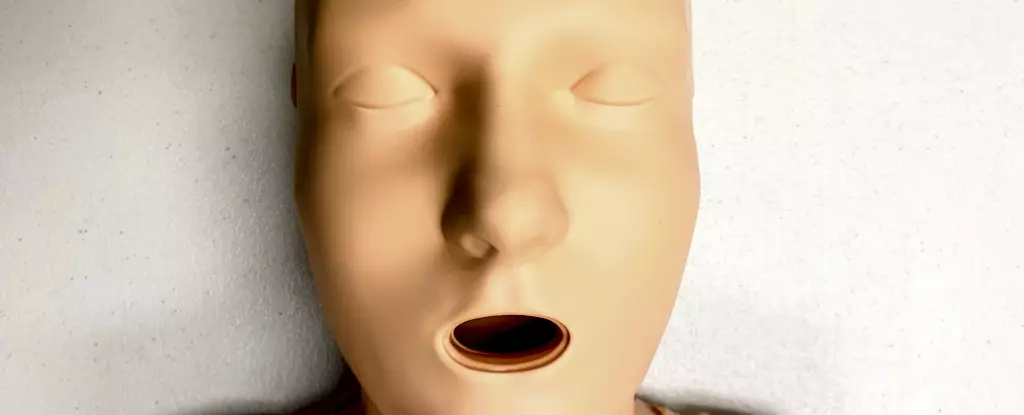Cardiac arrest is a life-threatening emergency where every second counts. If an individual’s heart stops beating, bystanders have a narrow window—in mere minutes—to intervene and potentially save a life through cardiopulmonary resuscitation (CPR). This essential technique is crucial because it maintains blood circulation, supplying vital oxygen to the brain and other organs until specialized medical assistance can take over. Unfortunately, despite the clear importance of immediate action, statistics reveal a troubling trend: bystanders are less likely to perform CPR on women compared to men. This gender disparity raises questions about the broader implications of training practices and societal attitudes toward emergency interventions.
The Gender Discrepancy in CPR Response
A recent comprehensive study conducted in Australia evaluated nearly 4,500 cases of cardiac arrest, revealing a stark contrast in the likelihood of CPR being administered based on gender. Specifically, 74% of men received bystander CPR, contrasted with only 65% of women. This gap may seem small, but it can have profound consequences in emergency situations. The gender dynamics at play in these scenarios are complex and can be attributed to various factors, including social stigmas and the educational materials used for CPR training.
One startling element identified is the physical representation of CPR training manikins. Research indicates that about 95% of training manikins are designed to be flat-chested, reflecting a male-centric perspective in CPR education. While the technique of CPR remains unchanged regardless of breast anatomy, the perception and hesitancy surrounding the act of resuscitation can be affected by these design choices, potentially impacting bystanders’ readiness to help in a critical moment.
Understanding why bystanders may hesitate to perform CPR on women involves delving into cultural barriers and misconceptions. Many individuals may feel uncomfortable touching a female’s body during an emergency due to fears of misinterpretation or accusations of inappropriate behavior. Additionally, societal perceptions often portray women as more fragile or delicate, which may subconsciously discourage proactive intervention. Another alarming factor is the tendency for bystanders to struggle in recognizing that a woman might be experiencing a cardiac arrest—a critical skill when seconds can mean the difference between life and death.
Even in simulated CPR training scenarios, evidence suggests that trainees might exhibit bias, showing less inclination to prepare a woman for resuscitation by failing to appropriately manage her clothing or hesitating to act. This hesitation in training undoubtedly translates into real-world emergencies, perpetuating a cycle of inaction when swift measures could save lives.
A key aspect in addressing the gender disparity in CPR is to examine the resources available for training. A recent exploration identified only a limited number of CPR training manikins—20 in total—currently on the global market, of which only five were marketed as “female,” and merely one featured breasts. This stark representation reinforces the need for more inclusive training tools that accurately reflect the diverse range of individuals potentially needing assistance during a cardiac event.
Moreover, the research highlighted critical gaps in diversity, not only in anatomical representation but also regarding skin tone and body size. While 65% of manikins provided more than one skin tone, the overwhelming majority were lean and lacked representation for larger body types. This deficiency in diversity could contribute to the discomfort and doubts that bystanders may feel when faced with a situation requiring CPR on someone who does not fit into the conventional mold usually depicted in training methods.
Expanding Training and Awareness Efforts
Recognizing the pressing need for inclusivity in CPR education, it is essential to implement training resources that better prepare individuals to respond effectively in emergencies involving people of all genders and body types. Offering a broader range of training manikins that reflect real-world diversity is a crucial starting point. Additionally, ongoing education on the risks women face in relation to cardiovascular diseases—an area historically underrepresented in discussion—is paramount in ensuring no one is overlooked during emergencies.
To dismantle the barriers surrounding CPR education and to increase the likelihood of intervention in cardiac arrest cases, it is critical to foster a cultural shift in perceiving men and women equally during emergencies. Encouraging individuals to prioritize human life over societal stigmas can have a transformative effect, ultimately leading to improved survival rates for everyone encountering life-threatening situations.
The urgency of reevaluating CPR training practices and ensuring inclusivity in the methodology cannot be overstated. Empowering potential bystanders with the confidence to act—regardless of the gender or appearance of the individual in need—can undoubtedly save lives and foster a healthier society overall.


Leave a Reply